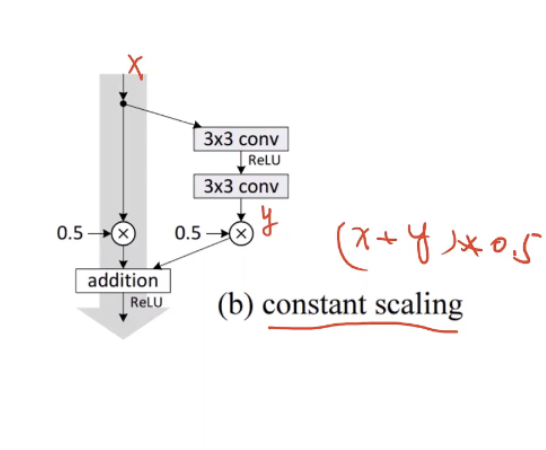1
2
3
4
5
6
7
8
9
10
11
12
13
14
15
16
17
18
19
20
21
22
23
24
25
26
27
28
29
30
31
32
33
34
35
36
37
38
39
40
41
42
43
44
45
46
47
48
49
50
51
52
53
54
55
56
57
58
59
60
61
62
63
64
65
66
67
68
69
70
71
72
73
74
75
76
77
78
79
80
81
82
83
84
85
86
87
88
89
90
91
92
93
94
95
96
97
98
99
100
101
102
103
104
105
106
107
108
109
110
111
112
113
114
115
116
117
118
119
120
121
122
123
124
125
126
127
128
129
130
|
import torch.nn as nn
import torch
import torch.nn.functional as F
from torchvision import datasets
from torchvision import transforms
from torch.utils.data import DataLoader
import matplotlib.pyplot as plt
batch_size = 64
transform = transforms.Compose([transforms.ToTensor(),
transforms.Normalize((0.1307,), (0.3081,))])
transform = transforms.Compose([transforms.ToTensor(), transforms.Normalize((0.1307,), (0.3081,))])
train_dataset = datasets.MNIST(root='../dataset/mnist/', train=True, transform=transform, download=True)
train_loader = DataLoader(dataset=train_dataset, batch_size=64, shuffle=True)
test_dataset = datasets.MNIST(root='../dataset/mnist/', train=False, transform=transform, download=True)
test_loader = DataLoader(dataset=test_dataset, batch_size=64, shuffle=False)
class ResidualBlock(nn.Module):
# Residual Block需要保证输出和输入通道数x一样
def __init__(self, channels):
super(ResidualBlock, self).__init__()
self.channels = channels
# 3*3卷积核,保证图像大小不变将padding设为1
# 第一个卷积
self.conv1 = nn.Conv2d(channels, channels,
kernel_size=3, padding=1)
# 第二个卷积
self.conv2 = nn.Conv2d(channels, channels,
kernel_size=3, padding=1)
self.conv3 = nn.Conv2d(channels,channels,kernel_size=1)
def forward(self, x):
# 激活
y = F.relu(self.conv1(x))
y = self.conv2(y)
# 先求和 后激活
z = self.conv3(x)
return F.relu(z + y)
class Net(torch.nn.Module):
def __init__(self):
super(Net, self).__init__()
self.conv1 = torch.nn.Conv2d(1, 16, kernel_size=5)
self.conv2 = torch.nn.Conv2d(16, 32, kernel_size=5)
self.mp = nn.MaxPool2d(2)
self.rblock1 = ResidualBlock(16)
self.rblock2 = ResidualBlock(32)
self.fc = torch.nn.Linear(512, 10)
def forward(self, x):
in_size = x.size(0)
x = F.relu(self.mp(self.conv1(x)))
x = self.rblock1(x)
x = F.relu(self.mp(self.conv2(x)))
x = self.rblock2(x)
x = x.view(in_size, -1)
x = self.fc(x)
return x
net = Net()
device = torch.device("cuda:0" if torch.cuda.is_available() else "cpu")
net.to(device)
criterion = torch.nn.CrossEntropyLoss()
optimizer = torch.optim.SGD(net.parameters(), lr=0.01)
def train(epoch):
running_loss = 0.0
for batch_idx, data in enumerate(train_loader, 0):
inputs, targets = data
inputs, targets = inputs.to(device), targets.to(device)
optimizer.zero_grad()
# forward
y_pred = net(inputs)
# backward
loss = criterion(y_pred, targets)
loss.backward()
# update
optimizer.step()
running_loss += loss.item()
if (batch_idx % 300 == 299):
print("[%d,%d]loss:%.3f" % (epoch + 1, batch_idx + 1, running_loss / 300))
running_loss = 0.0
accuracy = []
def test():
correct = 0
total = 0
with torch.no_grad():
for data in test_loader:
images, labels = data
images, labels = images.to(device), labels.to(device)
outputs = net(images)
_, predicted = torch.max(outputs.data, dim=1)
total += labels.size(0)
correct += (labels == predicted).sum().item()
print("accuracy on test set:%d %% [%d/%d]" % (100 * correct / total, correct, total))
accuracy.append(100 * correct / total)
if __name__ == "__main__":
for epoch in range(10):
train(epoch)
test()
plt.plot(range(10), accuracy)
plt.xlabel("epoch")
plt.ylabel("accuracy")
plt.grid()
plt.show()
print("done")
|



